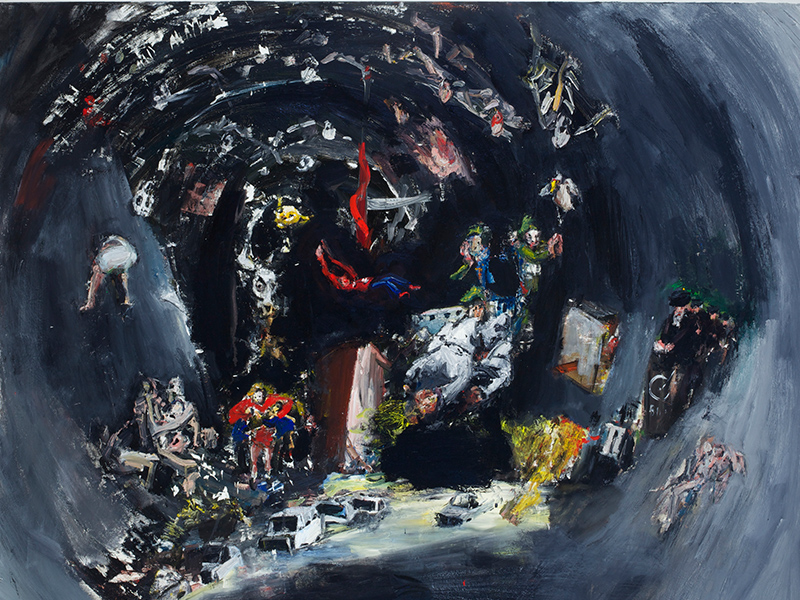Toronto artist Howard Podeswa’s family roots run deep in the world of art. He is the son of the late artist Yidel Podeswa, and his grandfather, the late Chaim Pinchas Podeszwa (with a “z”), was an artist as well.
Podeswa’s latest installation, A Brief History, was influenced by physicist and author Stephen Hawking’s book, A Brief History of Time. Opening Jan. 14 (today) at the Koffler Gallery, it explores artistic legacies by re-imagining historic paintings.
“It doesn’t say what it is a brief history of, so it can allude to many things, which is very important to me and all the work that I do. I want people coming to the show to bring their own associations,” explains Podeswa, who this year marks 30 years as a professional artist with 13 collections to his credit.

One of the inspirations for this show is a painting of a church dome made famous by Francisco Goya’s Cupola of San Antonio de la Florida. One of the Podeswa paintings in the show is a large black circle with things going on inside called Hell, and the other, more hopeful large painting, is Heaven set against a largely white background of floating circles, and within these circles are miniature worlds that fill up the entire canvas.
“The viewer is in the middle between those two,” Podeswa explains. “In a way, A Brief History is the life you live between those two end points.”
In this show, he also examines the issue of mortality. The concept of hell for him was all the fears we have around mortality and the end of civilization that bring you around to the beginning and the end of the universe itself.
“My mind took me all the way to historical endings that people like Goya were interested in and to the ending of everything and the beginning of everything, which is what Hawking is interested in.”
Podeswa primarily works in oils. “The work I do is theme-based,” he explains. “Something will grab my attention, and I marshal all my resources around it, and then I produce a body of work related to that, although I may have to change the style and the way I work in order to realize that particular vision.”
READ: MAURICE SENDAK EXHIBIT IN TORONTO INCLUDES ‘WILD THINGS’
His past shows included delving into the old masters and looking at how iconic paintings of theirs have influenced other artists over the years and how this has become a language that has been passed down to generations of artists.
Podeswa started with Spanish painter, Diego Velazquez’ 1656 painting called Las Meninas, at the Museo Nacional del Prado in Madrid. Upon seeing the painting, Podeswa felt he should put down his brushes and walk away because Velazquez had mastered everything in this painting that anyone had ever wanted to do, and in a way that Podeswa never thought anyone else could do.

“I became obsessed with the painting,” he admits. “I just thought I would have to recreate it and pick it apart. As an artist, whatever I am going through becomes the work. The whole process of doing it became the basis of my next many shows. I did a show based on my reactions to Velazquez, then another two shows based on my reactions to Rembrandt and Goya.”
In simplest terms, Podeswa deconstructs a piece and then recreates it. Take his Rembrandt’s Night Watch for example: Podeswa measured all the significant compositional points and graphed them all out so as to understand how Rembrandt created so well the illusion of a three-dimensional space on a flat surface. Using these points without taking away Rembrandt’s narrative, Podeswa created a life-size painting.
Podeswa, who is also film and television director Jeremy (Game of Thrones) Podeswa’s brother, says being Jewish affects his makeup. “It affects everything, but it is very subtle,” he reflects. “I’m concerned with existential questions, which is not by any means just a Jewish trait but something we have quite strongly in our culture.”
A Brief History runs until March 20 at the Koffler Gallery, Artscape Youngplace, 180 Shaw St., Toronto.
